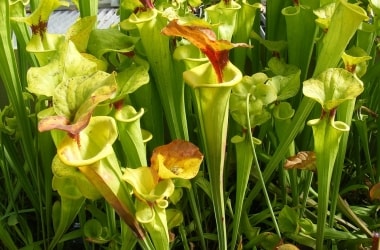
Carnivorous plants have been known to employ a variety of techniques like nectar, smell, colour and ultraviolet florescence to lure and capture prey.
But now, scientists at the Jawaharlal Nehru Tropical Botanic Gardens and Research Institute here have come up with evidence that some carnivorous plants use carbon dioxide (CO
2) to attract insects and ants to their prey traps.
A study conducted by the division of Phytochemistry and Pharmacology at the institute has found that the Indian pitcher plant (Nepenthes khasiana) uses the gas, both to attract prey and to aid the digestive process.
The research team demonstrated that the unopened pitchers of the plant are carbon dioxide-enriched, with a gas concentration of 2,500 to 5,000 ppm (parts per million), approximately 10 times that in the earth’s atmosphere.
The open Nepenthes pitchers were found to emit CO
2 constantly to attract insects.
The study also detected high levels of CO
2 dissolved in acidic pitcher fluids, ensuring optimum activities of the digestive enzymes.
Carnivorous plants of the genus Nepenthes supplement their nutrient deficiency by capturing insects through their leaf-evolved pitchers which act as biological traps.
CO
2 is a sensory cue and most insects have well-developed receptors which help them respond to subtle variations of CO
2 in the form of plumes arising from point sources.
The study found that the high CO
2 inside the pitchers was produced by the respiration of tissues within the cavity.
The sequential events of lid opening, CO
2 release, and prey capture were found to trigger the release of antifungal compounds into the pitcher fluid, preventing infections from incoming prey and act as a tranquilliser.
Nepenthes pitchers have the potential to be used as natural models mimicking an anticipated elevated CO
2 scenario on earth.